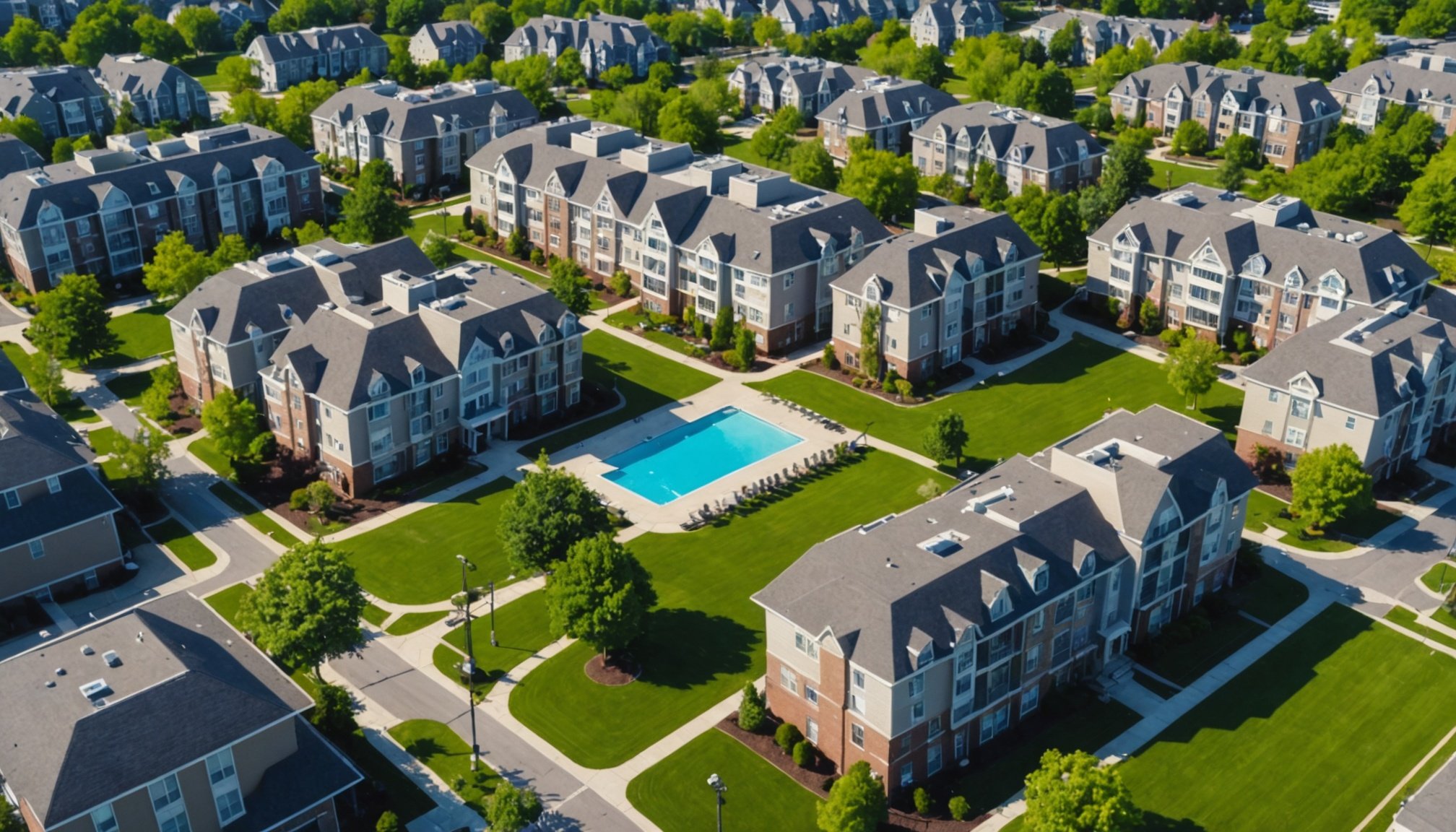Understanding the Importance of Equitable Access to Amenities
Ensuring equitable access to amenities is central to enhancing resident satisfaction and fostering a lively community. Amenities significantly influence the lifestyle and community engagement by providing spaces for leisure and social interactions. When access to these amenities is fair, it boosts overall satisfaction because residents feel valued and included.
Fair amenity management is crucial in preventing the potential consequences of inequitable access found in larger communities. If some residents feel excluded, it can lead to dissatisfaction, reduced participation, and even conflicts within the community. By implementing a fair, systematic approach, residents are more likely to engage with and utilize shared spaces effectively.
In the same genre : Sustainable Solutions for Bustling Cities: A Comprehensive Guide to Low-Impact Development Strategies
Equitable access also contributes to the overall success of amenity management by ensuring that resources are fully utilized. This involves creating policies and systems that consider the diverse needs of the community. Fair scheduling and access systems ensure that all residents, regardless of schedule or lifestyle, can benefit from the community’s amenities. This approach also enhances trust and communication between residents and management, paving the way for a more harmonious living environment where everyone thrives.
Innovative Strategies for Property Managers
Modern property management demands adopting innovative solutions to enhance resident satisfaction and optimize amenity use. Technology offers numerous ways to streamline access and improve the management of shared spaces.
Have you seen this : Transforming real estate: the role of robotics in advancing construction and maintenance innovation
Utilizing technology can significantly enhance amenity management. Smart access systems, such as keyless entry, increase both security and convenience for residents, while ensuring fair equitable access. Additionally, app-based systems allow residents to easily reserve amenities, fostering fair usage.
Best practices include establishing collaborative platforms where residents play an active role in co-designing amenity spaces. By tailoring facilities to specific community preferences, property managers not only enhance resident engagement but also ensure that amenities meet diverse needs.
Flexibility in scheduling is equally crucial. By employing dynamic systems that adapt to varying usage patterns, managers can maximize amenity access and prevent exclusivity. This approach not only resolves potential conflicts but also strengthens community engagement, ensuring fair distribution of resources.
Lastly, continual feedback collection is indispensable. This empowers property managers to proactively address issues, driving improvements in amenities and increasing satisfaction levels. Engaging with residents consistently ensures adaptability and responsiveness, fostering a harmonious community environment. Building trust and communication between management and residents becomes vital in refining strategies for equal access.
Case Studies of Successful Implementations
In exploring case studies of communities that have successfully enhanced access to amenities, it’s crucial to pinpoint the strategies that led to their success. These success stories often highlight the transformative impact of strategic planning and community-focused innovation on community engagement.
For instance, consider a community that adopted a comprehensive approach by integrating smart access systems combined with resident feedback mechanisms. This development led to a 30% increase in resident participation within the first year. Residents commented on the ease of accessing resources and the increased feeling of safety, thanks to these technological solutions.
Key strategies involved not just technology, but also active community engagement. By involving residents in the decision-making process, managers reinforced a sense of ownership, leading to enhanced community satisfaction. Engaging residents through workshops and collaborative sessions allowed facilities to reflect the genuine needs and desires of the community, paving the way for improved amenity usage.
Measurable outcomes from these initiatives included not only increased participation rates but also higher resident satisfaction levels, as collected through surveys and direct feedback. The proactive incorporation of resident inputs ensured policies remained adaptable, continuously aligning with evolving community needs.
Tools and Technologies to Enhance Access
In today’s digitised world, leveraging technology tools is vital for improving amenity reservations and overall resident experience. App-based solutions have revolutionised how communities manage amenity access, allowing residents to effortlessly book facilities while providing real-time feedback on their experiences. This seamless process not only boosts resident satisfaction but ensures more organised and balanced amenity usage.
Smart access systems, such as keyless entry and digital key cards, significantly improve both security and convenience. These systems simplify the entry process while maintaining rigorous security protocols, ensuring fair and equitable access across different resident needs.
Digital platforms have also proven effective in promoting community events, offering residents a hub for communication and participation. These platforms enable the swift dissemination of information about upcoming events and community activities, fostering heightened community engagement.
The main benefits of such technologies include enhanced security and streamlined processes, which contribute to safer and more inclusive environments. As technology continues to evolve, property managers are encouraged to adopt these solutions, tailoring them to better address the preferences and needs of their communities. Continuous innovation and adaptation will lead to more efficient and satisfying amenity management experiences for all residents.
Challenges and Solutions in Providing Access
Ensuring equitable access to amenities is often met with distinct challenges that require strategic solutions. One common challenge is the diversity of resident needs which requires thoughtful consideration for each group’s unique preferences and schedules. Implementing a system that respects these differences is key to creating a balanced communal environment.
Engaging residents from differing backgrounds and lifestyles can be complex. Solutions include crafting events and amenities that appeal to various interests, thereby drawing a wide spectrum of participation. Tailoring communications to highlight these diverse offerings can enhance resident satisfaction.
Achieving amenity management that adapts to changing resident demands is another hurdle. Regularly gathering feedback ensures that management remains responsive to evolving needs. This adaptive approach allows for the rectification of issues before they escalate into dissatisfaction.
Clear guidelines for amenity reservations and usage, reinforced through technology tools, can mitigate misunderstanding and enhance community engagement. Technologies that offer real-time updates provide transparency and assurance that facilities remain accessible to all.
Ultimately, crafting an inclusive environment fosters trust and community cohesion. Overcoming these barriers through innovation and ongoing dialogue ensures not only satisfaction but also the success of amenity management in any community setting.
Engaging Residents in the Process
Enhancing resident involvement in amenity planning and management fundamentally strengthens community bonds. Techniques that foster this engagement, such as participatory design and collaborative decision-making, are critical. Encouraging community building through strategic interactions ensures that amenities reflect the true needs of residents.
Incorporating participatory design allows residents to voice their preferences and concerns, ensuring the amenities meet diverse needs. This transparent approach not only improves amenity usage but also builds trust between management and residents. Examples of successful participatory design include workshops and brainstorming sessions that gather community input for shared spaces.
The benefits of fostering a sense of ownership are wider participation and increased satisfaction. When residents feel actively involved in shaping their environment, they are more likely to take responsibility for its maintenance and respectful use. This sense of ownership increases the likelihood of engaged and proactive community members.
Case examples of enhanced engagement demonstrate significant improvements. Communities that implemented participatory workshops often reported higher amenity usage and resident satisfaction. Residents expressed a stronger connection to their community spaces, illustrating the profound impact of inclusive planning and community building. These models highlight the transformative potential of involving residents in amenity management from conception to execution.











